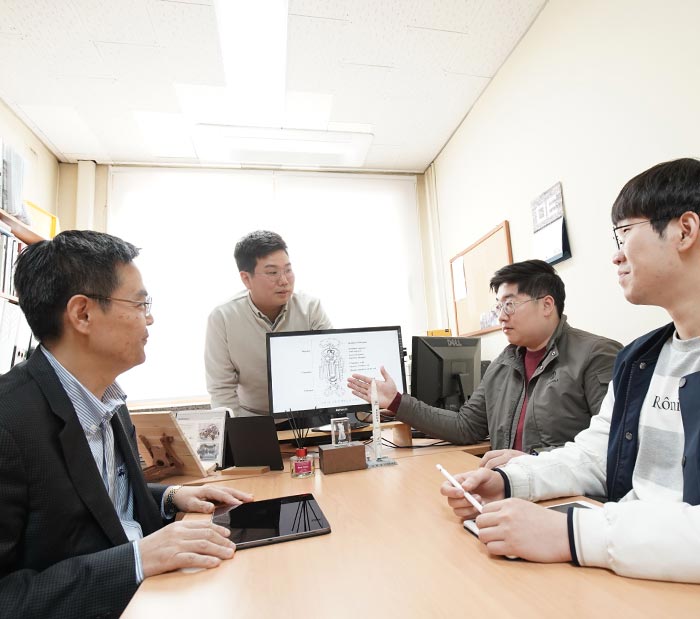Research Stories
New Method for Evaluating the Combustion Stability of Hydrogen/Oxygen Bipropellant
Fundamental technology for the diversification of liquid rockets propellants
Mechanical Engineering
Prof.
KWON, OHCHAE
Oh Chae Kwon, professor of mechanical engineering, has suggested a method for evaluating the combustion stability of hydrogen/oxygen bipropellant. It is expected to be a fundamental technology for the diversification of liquid rockets propellants in Korea.The results of the research that was supported by the space core technology program promoted by the Ministry of Science and ICT and the National Research Foundation of Korea have been published on August 1 in the print edition of 'Energy'.
Turbulent combustion is a complex process involving a wide range of length scales. In order to comprehend turbulent combustion phenomena in rocket engines, it is needed to investigate the turbulence-chemistry interaction that determines the flame-front structure. While the combustion characteristics of kerosene/ oxygen propellants have been recently investigated in Korea, however, the combustion characteristics of the hydrogen propellant have not been extensively studied.
Hydrogen propellant which has been highlighted as a propellant of reusable rockets has various advantages such as high specific impulse and eco-friendly features compared with other conventional liquid bipropellants such as kerosene. Thus, hydrogen propellant has been used for commercial rocket engines in other countries and has the potential to be developed in Korea.
His research team conducted combustion experiments, measuring combustion stability limits using a high-pressure model combustor which is designed to endure pressure up to 60 bar and a propellant supply facility capable of feeding cryogenic liquid oxygen in order to simulate actual rocket engine operating conditions. The combustion stability limits such as flame extinction and instability are directly related to the stability of rocket engines, and the results can be used for the baseline data of hydrogen rocket engine design.
They analyzed the mixing and spray characteristics in various injection conditions by changing temperature, pressure, phase and injection velocity and investigated the combustion characteristics by visualizing flames. A new method to estimate Damkohler number (Da) using the flame visualization was suggested. The proposed modified Da provides the limits for the occurrence of combustion instability. A regime diagram has been constructed through the mapping of flame structure onto a two-dimensional plot.
This achievement is meaningful in that it provides criteria for evaluating the combustion characteristics of propellants in general, even if the variables related to combustion such as the size of the combustion chamber, propellant flow rate, propellant injection velocity and propellant type are changed. Combustion stability limits which are measured under specific experimental conditions seem to be difficult to be used in evaluating actual rocket engines with different conditions.
This dimensionless number which was applied to gas turbines and boilers can also be used for the evaluation of liquid rocket engines as well.


